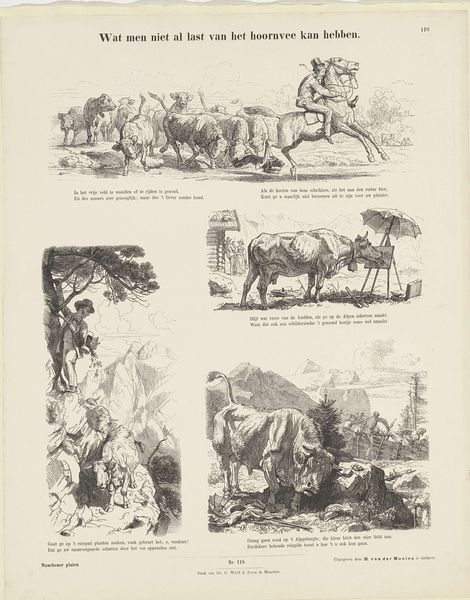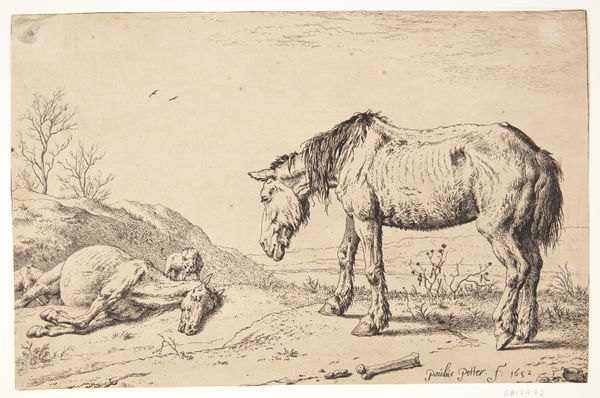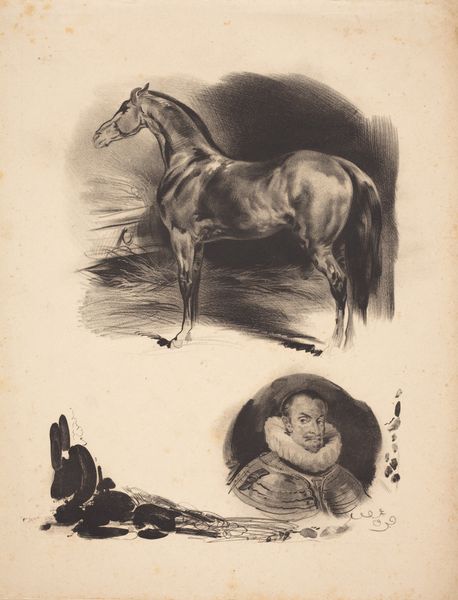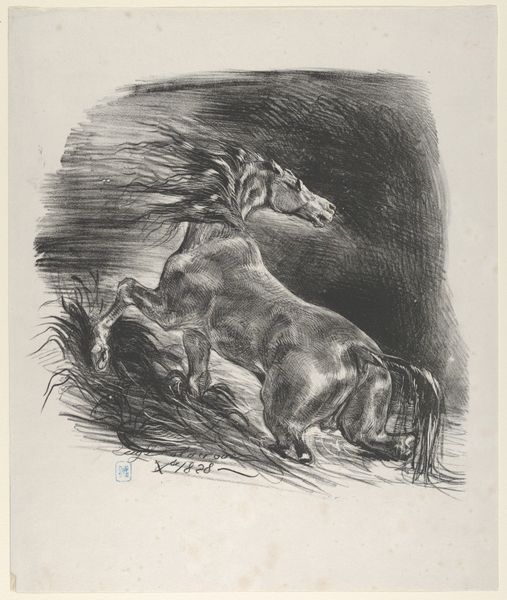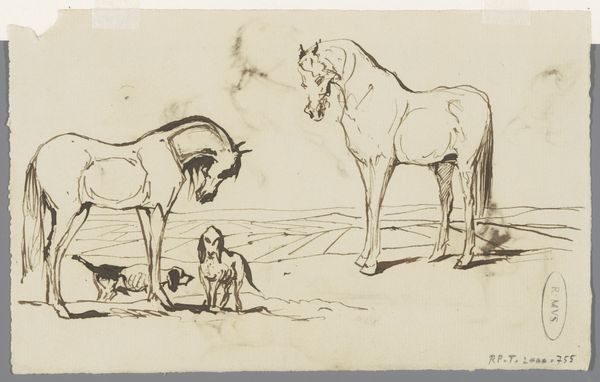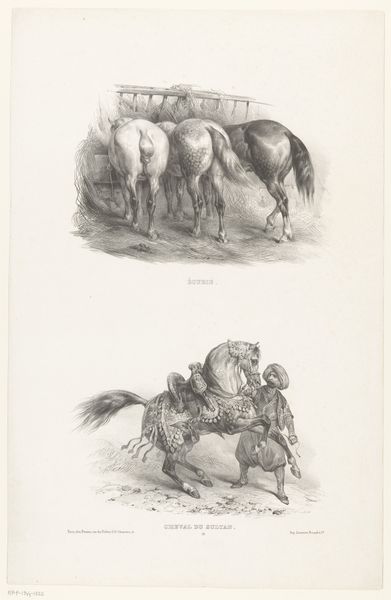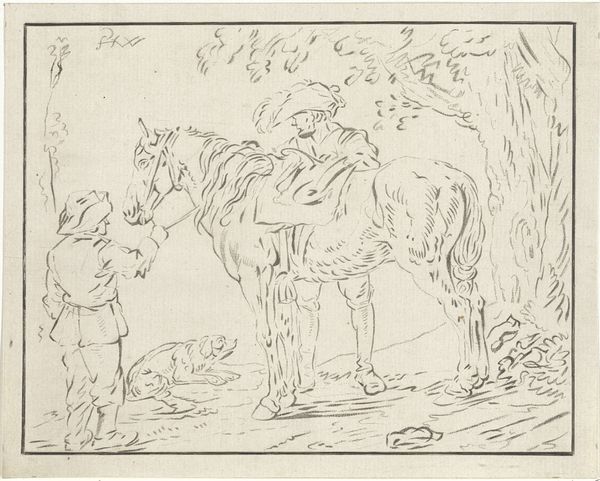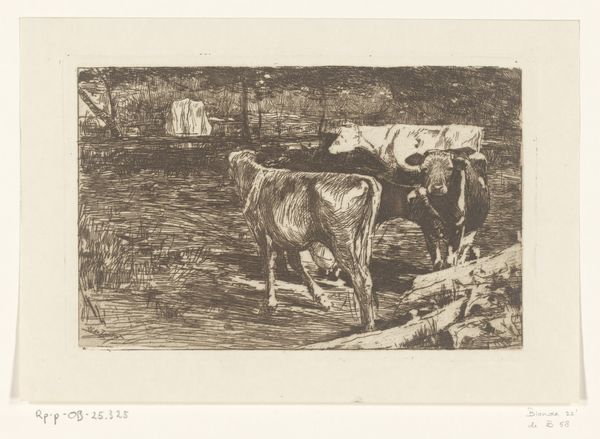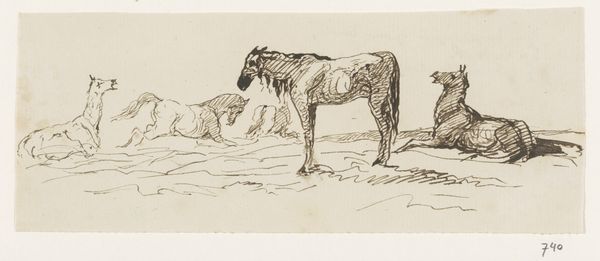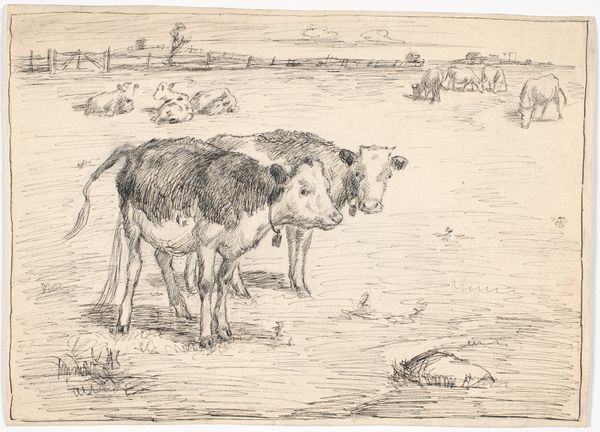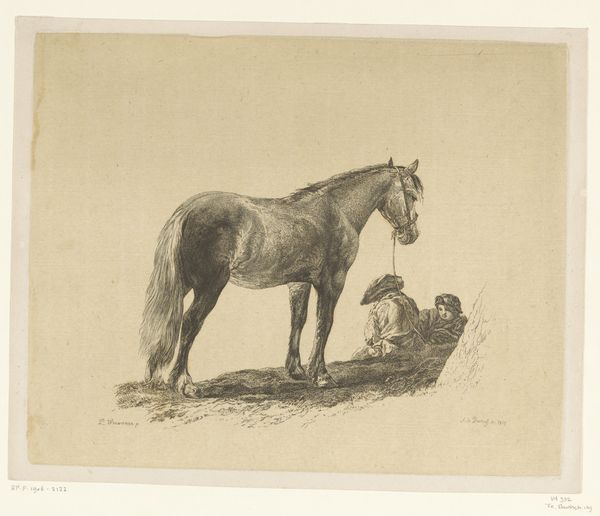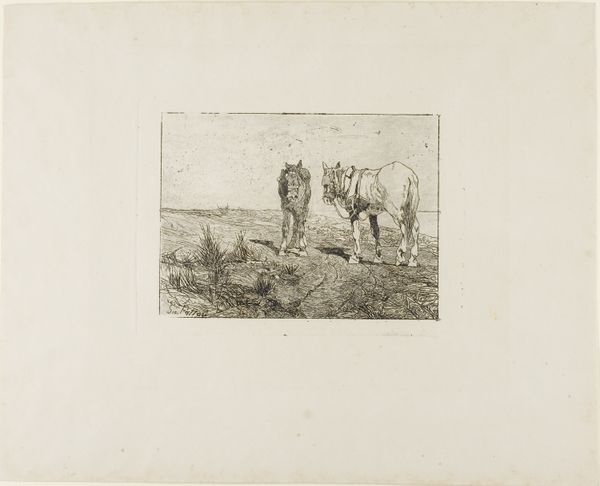
To illustrationsudkast til H.C. Andersen, Skarnbassen 1867
0:00
0:00
drawing, paper, ink, pen
#
landscape illustration sketch
#
drawing
#
ink drawing
#
narrative-art
#
mechanical pen drawing
#
pen illustration
#
pen sketch
#
pencil sketch
#
landscape
#
figuration
#
paper
#
ink
#
ink drawing experimentation
#
pen-ink sketch
#
botanical drawing
#
sketchbook drawing
#
pen
Dimensions: 133 mm (height) x 103 mm (width) (bladmaal)
Curator: This pen and ink drawing by Lorenz Frølich, dating to 1867, offers a glimpse into the artist’s illustrative process for Hans Christian Andersen's "The Dung Beetle," showcasing preliminary sketches for the tale. What's your initial take on it? Editor: The sketchiness is immediately apparent; it possesses a dreamlike, ephemeral quality. The stark contrast between the detailed foreground and the hazy background creates a fascinating sense of depth. Curator: Absolutely. Frølich was deeply interested in translating literary narratives into visual form. In this instance, consider Andersen’s own complicated social commentary through a child's imagination. The lower portion features a sketch of the titular beetle, an allegory for self-importance and unrecognized talent—or rather, how social worth is appraised within bourgeois conventions. Editor: I appreciate the linear precision used to delineate the horse and its harness in the lower half. See how Frølich uses the pen to suggest volume and texture, almost tactile? Curator: It speaks to Frølich's broader engagement with contemporary social mores and his use of Andersen's tale to subtly critique the vanity inherent in social structures. Note how the children, likely symbolic, interact with the natural world, while the horse with its beetle seems trapped in domesticity and labor, and its value determined through servitude. Editor: You’re situating this within a framework of social critique, which is thought-provoking. I initially responded to it purely on a formal level, noticing how the upper vignette offers the spaciousness of childhood play, which contrasts with the confined depiction of the horse, seemingly weighed down. Curator: The children, perhaps unknowingly, are already adopting roles and perspectives taught to them—that of the observer or detached superior in an implicit human-animal hierarchy. Frølich is illustrating how these relationships take root even in innocence, hinting at the cycle of perpetuating power dynamics. Editor: A nuanced reading, enriching the visual analysis. Perhaps Frølich is capturing how these formative experiences become ingrained and reflective of those learned through social structure. Curator: Exactly. By considering this artwork as a reflection on Andersen’s tale and within Frølich's broader body of work, we can read how art, especially illustrations made for children, encode ideological perspectives. Editor: It's fascinating to see how much can be gleaned from a sketch—how the initial visual explorations hold the kernels of deeper narratives and reflections on society.
Comments
No comments
Be the first to comment and join the conversation on the ultimate creative platform.
